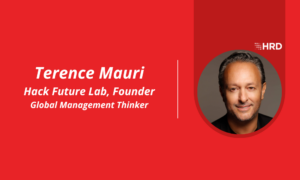Best management practices
- 9 Min Read
The HR agenda in its widest form is about lining employees up behind the organisation’s strategy in order to fulfil the goals of the business – and the role of managers and how they engage and motivate their teams is pivotal to this activity.
- Author: Cath Everett
- Date published: Sep 5, 2018
- Categories

As a result, a key role of any HR director is to help and support managers in developing the skills, capabilities and techniques they need to get the most out of their workforce. Here are three key considerations that managers today need to get on top of to ensure they get their practice right:
 Managing ongoing change
Managing ongoing change
Unlike even 20 years ago, change is a now a constant. This change is being driven by everything from technology and the widespread digital transformation agenda to demographics in the shape of four generations now being present in the workplace and the blurring of geographical boundaries as work teams become ever more global in their make-up.
As a result, some of the most important skills required by managers are resilience, agility and being able to foster a learning and growth mindset in both themselves and their employees.
Caroline Dunk, director of management consultancy cda, explains: “A key role of today’s manager is enabling change and helping people to adapt to it. You need to manage reactions to change and help the team become resilient so a lot of it is about supporting them through it.”
For managers to engage staff in this process, it is important to help them understand what positive change will look like and what behaviours and skills will be required in the new world – as they manage their own emotions around how the situation will affect them personally too.
But there are various techniques that can prove useful in this context, one of which is story-telling. As Alison Maitland, director of research and product at management consultancy Lane4, points out: “It’s an important way to communicate change as you can generate an emotional connection through your story, which helps to improve recall and attaches an element of motivation. You can also take a very complex idea and make it easy to understand using metaphors, or use the approach as a great way to celebrate success.”
But she warns that it is also important to consider the sub-text of any story that you tell, especially if wanting to shape change. “For example, if you talk about working all hours to get something done, even if the rest of the story is very positive, you may be setting up something inadvertently. So these things can have a shadow side,” Maitland points out.
Another emerging practice that has potential as a means of solving complex problems though is design thinking, which consists of five basic steps:
- Empathising with users;
- Defining user needs, their problem and your insights around it;
- Coming up with innovative ideas by challenging assumptions;
- Prototyping to create solutions quickly;
- Testing them.
As Maitland says: “Chairman of the World Economic Forum Klaus Schwab once said: ‘In the new world, it’s not the big fish that eats the small fish. It’s the fast fish that eats the slow fish.’ In other words, businesses are staying around for a shorter and shorter time, so to survive you have to respond quickly and be agile in the way you do things – and design thinking can help with that.”
Enabling remote working in virtual teams
An increasingly common practice across the business world involves employees working remotely as part of virtual teams, whether this means operating from home or with colleagues who are spread across the globe. This move has been driven by a number of factors, including a shift towards more flexible ways of working, a global skills shortage in key areas such as IT, and technology such as communication and collaboration tools becoming widespread.
But to enable this approach to work smoothly, managers need to adopt quite a different approach to management. They also need to consider questions such as how to build productive long-distance relationships, how to develop a sense of team spirit between people who may have never met, and how to performance manage someone who is based miles away.
In other words, says Susy Roberts, founder of management consultancy Hunter Roberts, a big challenge for managers these days is “having to work in more agile and collaborative ways than ever before to build engagement, while having much less face-to-face contact with their staff”.
Being able to do so effectively boils down to an individual manager’s “emotional intelligence and their ability to build trust relationships, which entails recognising how people are feeling, and understanding the social side of teamwork rather than just focusing on the tasks they perform”, believes cda’s Dunk.
Put another way, the focus is very much on ‘soft’, people rather than technical skills, which involves motivating and inspiring employees in order to optimise their contribution rather than simply telling them what to do.
This approach is particularly important with Millennials who respond poorly to being bossed around. As a result, says Roberts, “managers have to learn how to be genuine coaches and create a coaching culture, which involves showing people how to do things rather than telling and directing them”.
Such ideas also feed into the concept of creating a “team of teams”, or cross-functional networks of people located both inside and outside the organisation. These networks or teams can be created or disbanded very quickly to undertake certain projects or initiatives and, according to Roberts, are “focused, flexible and very fertile”.
But for this approach to work, organisations must have a flat hierarchical structure and a culture based on empowering individuals to take responsibility for their own work and behaviour. Moreover, the ultimate aim to create so-called “super-teams not superstars”.
“Members of super-teams work together very collaboratively and all understand their own role and part in what’s happening,” Roberts explains. “They work flexibly towards a shared vision with clear purpose and direction so there’s much less hierarchy and much more focus on creating positive mindsets.”
Put another way, this means taking a strengths-based approach to leadership. and emphasising what is possible as opposed to what is not. It also means creating diverse teams of people with complementary skills, knowledge, backgrounds and personalities to drive innovation.
Ensuring diversity and inclusion
Embedding diversity and inclusion (D&I) into company culture not only helps employers to get the most from their people, but also helps to boost the bottom line. According to McKinsey’s latest report entitled ‘Delivering through diversity’, there is a clear correlation between taking this approach and corporate profitability.
For example, the top 25% of organisations surveyed by the management consultancy that had a good gender mix at board level were 21% more likely to benefit from above average profitability. The figure rose to 33% if ethnicity and race were taken into account.
But gender and race, although generally front of mind in today’s business world, are not the only characteristics that should be considered. Instead it is important to look at the impact that anyone who is simply ‘different’ can have on the prevailing corporate culture and find ways to ensure they do not end up feeling excluded, which is of benefit to no one.
For example, James Beazley, managing director at executive search and leadership advisory firm 6 Group, explains that organisations in more “traditional” fields such as financial services, utilities and healthcare often experience a huge “diversity shock” when hiring experts to help them with their digital transformation initiatives.
“They hire hundreds of digital experts and coders who often have a) very limited commercial experience and b) turn up to work in jeans, Vans sneakers and a T-shirt with ‘Easy Tiger’ printed on the front,” he explains.
“What impact does that have on current company’s culture to accept different people? So, you can see the digital and diversity piece are very closely linked.
“Diversity is not only limited to “people”. It is also linked to diversity of thought around what is leadership, global and remote working (which of course has been largely facilitated by a global digital capability where you can literally work from anywhere on the planet with an internet connection), collaborative and cross cultural working practices being challenged by these new “start-ups” with cool break out areas and an ability to skateboard the corridors whilst completing an ICO for a new blockchain initiative (for those that don’t know and ICO is an Initial Coin Offering – I only heard about it last night over a curry!).”
A further consideration linked to the increase in the number of virtual multinational teams is that managers need to be aware of cultural differences, styles and expectations if they are to ensure harmonious working. For example, while Dutch people are often happy to have robust discussions, individuals from the Middle East tend to avoid what they would perceive as conflict.
Another instance relates to hierarchy, which is central in Far Eastern cultures. As a result, challenging the boss would be frowned upon here, which presents issues if asking individuals to provide 360-degree feedback during the appraisal process.
As Cda’s Dunk points out: “It can lead to big misunderstandings and most managers are not well equipped to deal with the situation. But it’s important to invest time into trying to understand differences and thinking through what it means in terms of team dynamics.”
While it is important to “try to establish norms and address any conflict”, it is also vital to simply “listen to people and treat everyone with respect”, not least because team members will inevitably model leadership behaviours, she says.
What this all ultimately means is that the most significant thing for managers to brush up on today is their soft skills. “It’s about engagement and finding ways to optimise the contribution of each person. So it’s important to establish a culture that is accepting of diversity and treats everyone as an individual with value,” Dunk concludes.









